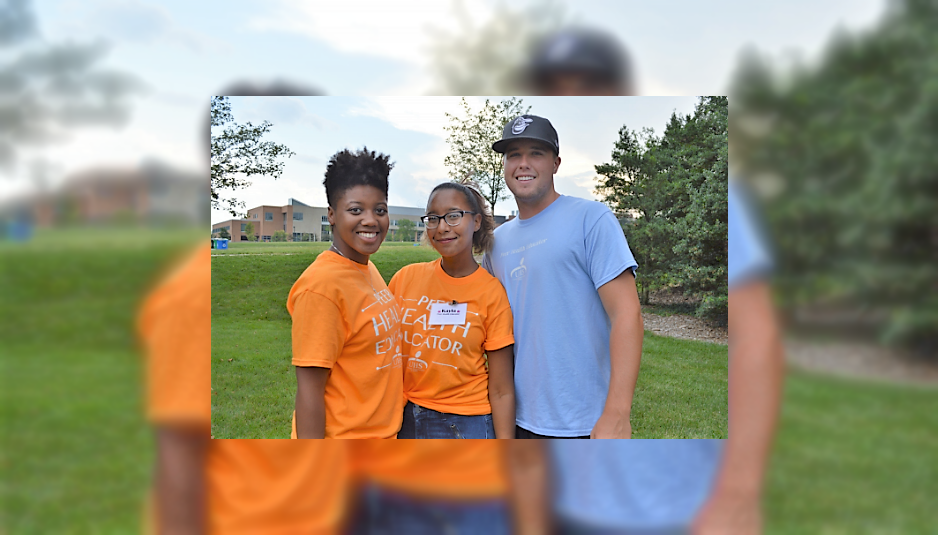“We’re all at a turning point in our lives where we can throw away everything we’ve been taught and adopt new ideas, or we can stick true to our roots,” said Samantha Smith, UMBC’s assistant director of health promotion, explaining the importance of collegiate health education. “Once we hit a certain age, occasional habits start to solidify and shape who we are.”
For more than five years, UMBC’s Peer Health Education Program has worked in conjunction with University Health Services to provide wellness support for UMBC’s student body.
Located across from UHS, tucked in next to the Erickson Hall’s stairs, Smith and her team of peer health educators devise strategies to promote healthy living across campus. Information sessions are one of the many services the Peer Health Education Program provides, concentrating on: general health and wellness, mental health and stress, sexual health, nutrition, alcohol, tobacco and drugs and constructing healthy relations.
A typical peer educator’s plate is chock full of training sessions and speaking to University Departments and Student Organizations about the importance of health and wellness. Groups can request a peer-led information session by filling out a form on the UHS website. Larger events are available on campus, but are less frequent.
During the fall semester, the Health Promotions office and peer health educators are busiest during the weeks leading up to Halloween and Thanksgiving. For Halloween, the office focused on sexual health and relationship dynamics, giving larger talks around campus and handing out fliers in the Commons. Following the ‘No Shave November’ theme, the program partnered with UMBC Men’s Athletics to promote men’s sexual and physical health around campus.
While the program allows Smith to take off her administrative hat and become one of the peers from time to time, the biggest challenge she faces is the number of peers she has. These low numbers make it hard for Smith to match every program request with a peer. Smith is hoping to see an increase in peers for the springtime when applications for the position open.
“Students should consider joining the program because it’s truly a great opportunity,” said Smith, “Okay, that may have been a little biased.”
“On a more serious note, students leave with professional and communication skills that prepare them for graduate, medical and professional schools,” she said. “In addition to professional development, participants can look forward to Practicum notification provided by the Career Center.
“When looking at applicants, those who communicate their flexibility and willingness to learn are the ones that stick out the most. The best peers aren’t necessarily the most outgoing or most creative, but the ones with the strongest work ethics,” Smith said.

